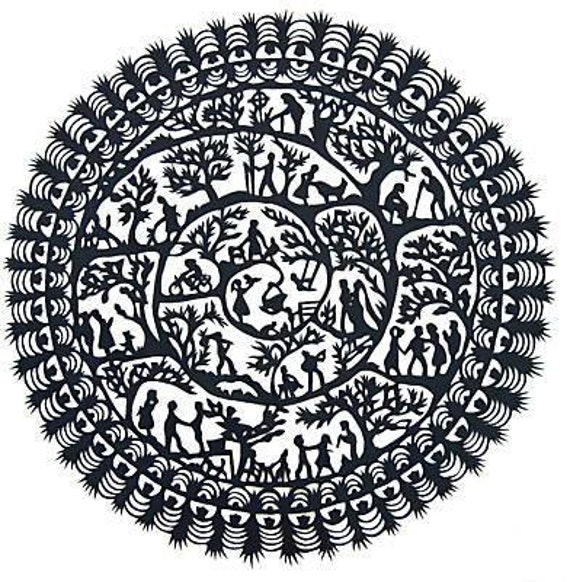These bird cages looked so cute that I knew I had to try making them. Since building this paper bird cage had more steps and materials compared to the other projects I've posted I took more pictures this time.
Materials
- Hot glue, liquid glue, or tape
- Scissors
- Ruler
- Pencil
- X-acto knife
- Yarn or thread
- Circular lid
- Hole puncher
- Cardboard
- Colorful scrapbook paper

Step 1:
Cut 12" x 1/4" strips of any color paper of your choice. Once cut, fold the strips in half and hole punch the crease. These will be the bars of your bird cage later.

Step 2:
Trace a circular object and cut it out, this will be the base of your cage.
Step 3:
Cut a 12" x 1" strip of any colored paper of your choosing.
Step 4:
Attach the 12" x 1" strip to the circle (the bottom/base of the cage) with hot glue or tape. Fold 1/4" the 12" x 1" strip of paper. On the 1/4" section of the strip make small short cuts with your scissors so you can attach it to the circle. The pictures above clarify how I accomplished this.

Step 5:
It's time to cut out your bird! I drew my own and cut it out with an X-acto knife and cut the bird out on cardboard. If you don't want to draw your own bird Click HERE to download your bird template. Then, make a small hole in the bird's back.

Step 6:
Thread a piece of string through the holes in your 12" x 1/4" strips of paper. Thread the string and knot it in the hole you previously made in the bird. I used thread, so it is harder to see the bird is attached to a string.
 Step 7:
Step 7:Hot glue, tape, or glue the 12" x 1/4" strips to the inside of the base of the cage. The more even the spaces are in between the strips the better the cage will look.

Step 8:
Now that you have the bars of your bird cage set up you can pull up the string to put your bird at any height of your choosing.

Step 9:
Once the bird is at the height that you want you can cut the excess string and hot glue the length of string you want.
Step 10:
You're almost done! Trace a small 1" circle in any color of your choice. Make six equal cuts that are each 1/4" deep into the circle. Once the incisions are made glue the circle to the top of your cage over the collision point of the 12"x 1/4" strips.
This was my final product. Through making this I learned a lot of ways of how to make this better. I made this awhile ago and I can't wait to make something that's more challenging.


























